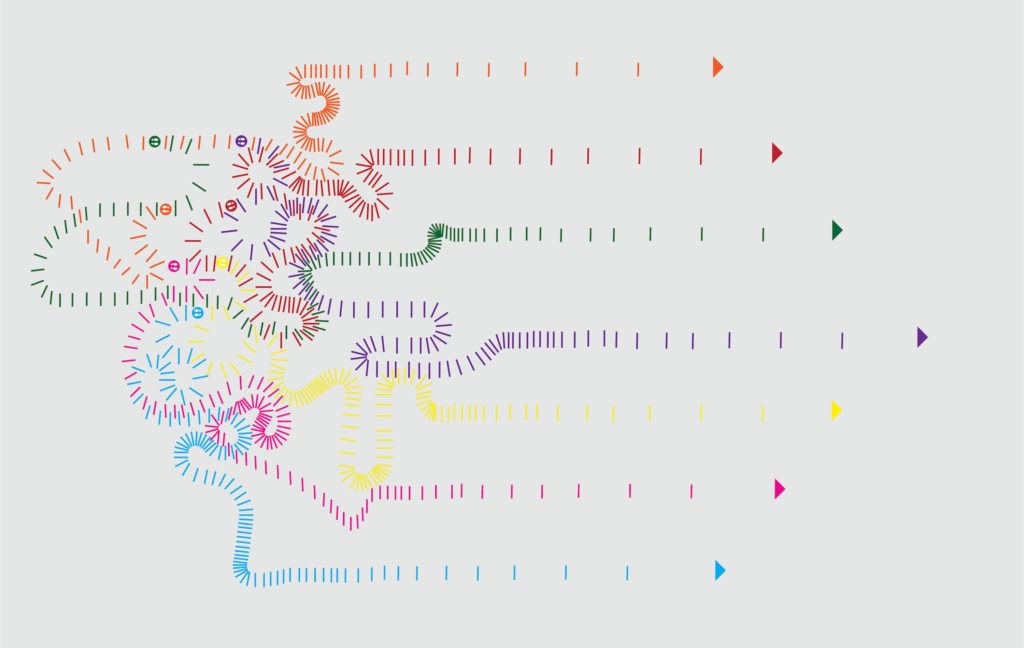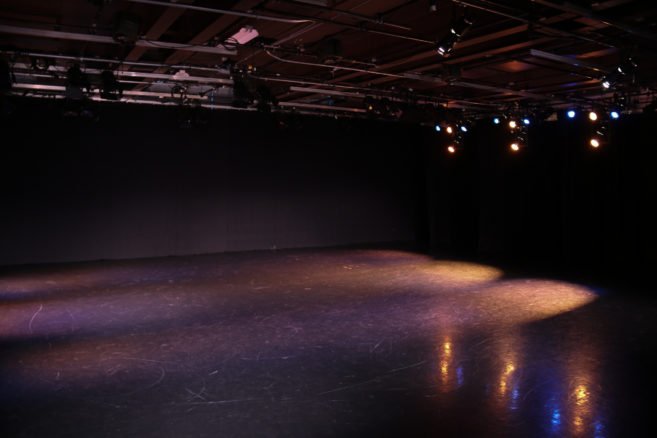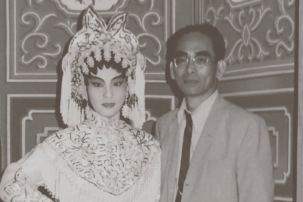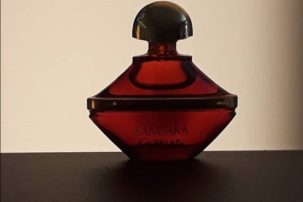As I move through the park on my morning walk I look around at my neighbours—a frail, elderly man with a face mask and cane, a young couple with a stroller and dog, a jogger wearing earphones, my 60-year-old neighbour leaving his house for work. A few weeks ago, we would have brushed by each other on the path, heads tilted to the sides, still uncertain of the rules of social distancing. Now we eye each other cautiously, locked in a strange corps de ballet, weaving through public space triangulated by each other’s movements.
Each spring, Richmond sees the Fraser-Skagit flock—at times numbering more than 100,000 snow geese—begin their summer migration to Siberia. The birds fly low overhead and I often find myself staring up at their downy bellies, set in perfect formation as they pass over. Flocks merge together seamlessly, each bird taking its place within the slipstream of the bird before it. A single bird maintains its place in a flock by being aware of the seven birds that surround it. For a long time, scientists assumed that the lead bird directed the motion of the flock, though with more careful research they now understand that the lead bird is just as responsive to those behind it. Monitoring and reacting to the pace, altitude and direction of the birds around it, each bird navigates its place in the flock as a series of responses, its body part of a larger machine.
COVID-19 has erased the boundaries of our individual bodies, infection joining us at the breath. Taking care of ourselves now means taking care of all ourselves. Safe drug supplies, universal basic income and housing for all are no longer pipe dreams of the far left. Decades of underfunded health and social welfare systems reveal themselves to be open wounds on our collective body. To resist infection we must become animal: find the rhythm of the flock, push our consciousness past our own individual bodies and into the bodies of those who surround us.
Home from my morning walk I find myself, like so many of us, I think, staring into a screen, past emails that have cancelled a year’s worth of exhibitions, residencies, projects and travel, wondering what it might mean to make art now? As we scramble to upload content and reframe workshops for a Zoom audience, we are left reeling. Art is essential; we know that. But the way we have been doing it is likely unsustainable in our post-pandemic world.
I was lucky, this year, to be one of 25 young artists to receive support from the Sobey Art Foundation. The jury’s decision to split the operating budget of the Sobey Art Award between the longlisted artists was remarkable—artists, jury and administration moved as a flock. It was clear that naming an individual winner in light of the global pandemic would be counter to our needs, when so many of us find ourselves struggling to figure out what our careers now look like, and what they might look like in an uncertain future.
Many of us who work in the arts find our practices not in a hermetic studio but in dialogue with a community. We find our worth not in demonstrations of virtuoso skill or technique, but in how we are able to direct attention, show new ways to perceive. To share our work, however, we still often rely on a system of resource-intensive exhibitions and international art fairs that celebrate a myth of solitary genius and privilege only a few. Surviving the pandemic requires a radical restructuring of our social systems. What does that require of our cultural institutions? Our practices will survive, but capital “A” Art, as we have known it, needs to change. I’d be lying if I said I wasn’t mourning it. But I’m pragmatic, and my daily walks through my neighbourhood don’t offer a lot of variation, so I’m stuck looking up at the snow geese, thinking about the movement of the flock.
I have been lucky in the past, a magic combination of privilege and hard work that has resulted in opportunities I couldn’t have imagined. But that also comes at a cost. When orders restricting travel were issued, I found myself sheltered in place with the only person I knew in the city I temporarily occupy, save one dear friend who bemoans the irony of our living temporarily in the same place and not being able to visit each other.
What might it mean, then, to rethink a culture of individual successes in the arts? Artists have been told that we should think outside the box, go against the grain, break away from the herd. We celebrate individual genius with awards, fairs and blockbuster exhibitions, often on the backs of underpaid labourers and at great ecological cost.
At first I was glib about isolation—“Well, it’s not that different for me,” I’d tell myself, “just some much needed studio time.” But as the weeks and cancellations and increasing doubt surrounding global travel, international residencies, galas and exhibitions—all part of a career in art these days—began to sink in, so did an increasing awareness that this is now an old model, and one that likely isn’t sustainable in our new reality, whatever that might ultimately turn out to be.
It is clear that our culture of exceptionalism in the arts is no longer viable. And, really, with the exception of the privileged few, it never has been. As museums, foundations, galleries, artist-run centres, publications and artists find our work screeching to a halt, we are left with a confusing feeling. Art is essential; we know that. But the way we have been doing it…isn’t. As we scramble to upload content and reframe workshops for a Zoom audience we find ourselves wondering, How do the birds keep moving if no one bird is leading? After all, they all want to go to the same place.

 Lou Sheppard, Murmuration (I) - Choreography for Social Distancing, 2020. Courtesy the artist.
Lou Sheppard, Murmuration (I) - Choreography for Social Distancing, 2020. Courtesy the artist.






